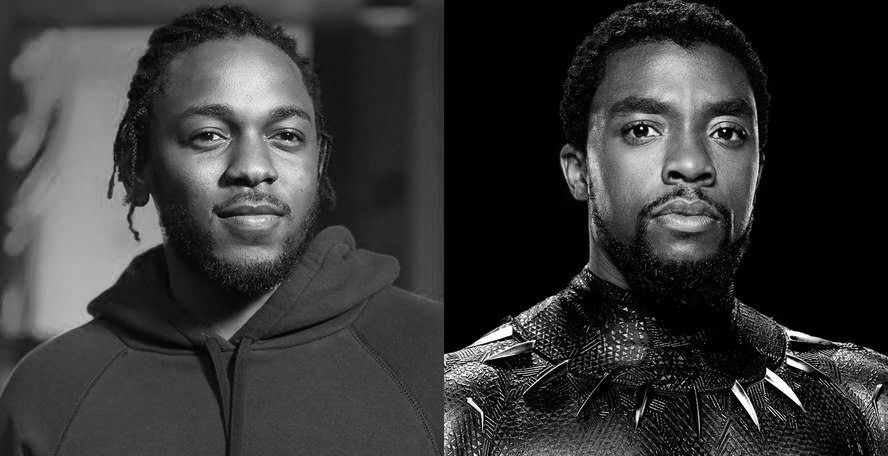New Kendrick Album Stirs Excitement for “Black Panther” Film

Friday marks the opening of Marvel’s highly anticipated “Black Panther” movie. The film has been eagerly awaited ever since the Black Panther character was introduced into the Marvel Cinematic Universe in 2016’s “Captain America: Civil War.” Chadwick Boseman excelled in his role as T’Challa/Black Panther and quickly became a fan favorite. Hype for the new film, which is currently sitting at 97 percent on Rotten Tomatoes, is at an all-time high for superhero moveies. And last Friday, as part of the promotion of the new film, Top Dawg Entertainment (TDE) released “Black Panther: The Album,” a concept album inspired by the movie.
TDE’s own Kendrick Lamar spearheads the effort. Lamar has an impressive history of narrative albums, the most recent being last year’s “Damn.” On “Black Panther: The Album,” Lamar coordinates a team of some of the most talented artists in hip-hop and R&B to create a cohesive and exciting album. The project consists of 14 songs that alternate between intense bangers and flavorful R&B tracks. While only three of the 14 songs, “All of the Stars,” “Opps” and “Pray For Me,” appear in the movie, one of the most impressive aspects of the album is how well it explores the themes of “Black Panther” in new contexts.
In the film, T’Challa takes over from his father as the ruler of Wakanda, a hidden, futuristic African nation. At the same time, T’Challa must uphold the mantle of the Black Panther, the legendary hero tasked with protecting Wakanda. On the opening track, “Black Panther,” Lamar addresses the responsibility and expectations that come with both kingship and the appearance of heroism, establishing a parallel between himself as “King Kendrick” and T’Challa.
The album goes deeper, however, reflecting on the villain Killmonger (Michael B. Jordan), an American trying to capture the throne of Wakanda. Killmonger serves as both the film’s antagonist and a foil to the Black Panther. Nevertheless, the artists on “Black Panther: The Album,” often empathize with him. The album examines the dichotomy between T’Challa, an African king, and Killmonger, an African-American from Oakland. On “Paramedic,” SOB x RBE, a group from of Northern California, rap from the perspective of Killmonger about the violence growing up in Vallejo, California and becoming successful despite a system rigged against them. On “Seasons,” the duality of Killmonger and T’Challa is ultimately resolved. Kendrick brings together Mozzy, a Sacramento rapper, and Reason and Sjava, two South African artists. In the end, Kendrick acknowledges, “I am T’Challa; I am Killmonger,” embodying both the hero and the villain.
The collaboration on “Seasons” is indicative of impressive synergy among artists from diverse spheres of the music world throughout the album. “Black Panther: The Album” includes a varied array of high profile and lesser-known artists, including five South African musicians. Each artist adds their own unique personality to the album, from 2 Chainz’s punch-line rap to Swae Lee’s beautiful crooning, from Anderson .Paak’s smooth soulful R&B to Vince Staples’ quick, sharp cadence and from James Blake’s ethereal singing to The Weeknd’s Auto-Tuned blend of pop and R&B.
The South African artists also distinguish themselves on the album. On songs like “Seasons” and “Redemption,” Sajava and Babes Wudumo add verses in Zulu, celebrating the African setting of the movie. Of course, overseeing the whole coalition is Kendrick Lamar, who makes his presence felt with powerful verses and hooks throughout the project.
Unfortunately, the album lags on the features from some of the most prominent artists. On “King’s Dead,” Future stops the song dead when he attempts to go falsetto, and on “Big Shot,” Travis Scott’s verse sounds generic and phoned-in.
Despite those weaknesses, the album holds up with consistently strong production from TDE’s in-house producers. Each beat is fully developed and fresh. On “Opps” and “Pray For Me,” the instrumentation reinforces the Afro-futuristic imagery of Wakanda. “Opps” sees Vince Staples rapping over electronic-influenced production paired with tribal drums. In the same vein, “Pray For Me” features a futuristic, heavy 808-drum beat.
With “Black Panther: The Album,” it seems that Kendrick Lamar has once again hit the mark. Though it features a variety of artists, the TDE album consistently excels in every direction. Furthermore, although the album reflects on the narrative themes of “Black Panther,” each featured artist — for the most part — adds their own personal experience and perspective to the music, making it enjoyable even outside of the context of the movie. Expectations are high for “Black Panther,” and if it’s anything like this album, it should hold up nicely.





Comments ()